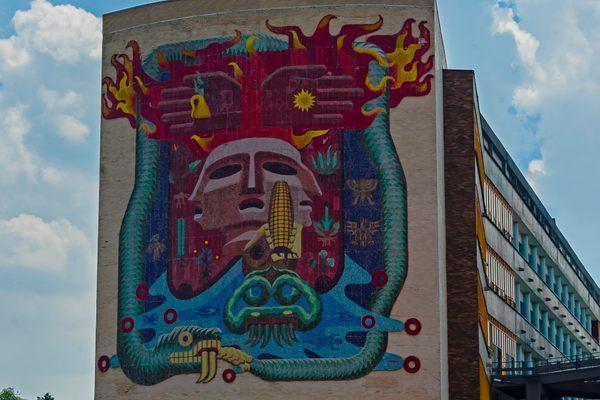Pabellón Rayos Cósmicos (Cosmic Ray Pavilion)
This laboratory has a remarkable concrete roof that measures less than an inch at its thickest point.
When the National Autonomous University of Mexico (UNAM) was building University City, the university’s science faculty had a special request. They wanted a building that would allow them to measure high-energy radiation from space and also protect its instruments so they weren’t exposed to the open air. The solution was the Cosmic Rays Pavilion, which revolutionized architecture.
Originally, the design for the laboratory featured a domed building. The project’s lead architect, Jorge Gonzáles Reyna, asked the architect Félix Candela for help, and Candela was not convinced that they could achieve the necessary roof thickness with a dome shape. Instead, Candela designed a building in the shape of a hyperbolic paraboloid. The double curves of the design allowed the roof to be extremely thin but maintain stability.
The Pabellón Rayos Cósmicos (Cosmic Ray Pavilion) measures 40 feet by 35 feet and contains two laboratory spaces. The walls are made of reinforced concrete, and the whole structure is held up by three arched supports. The paraboloid roof is just 5/8 of an inch at its thickest point. The building was inaugurated on August 23, 1951.
Candela became known for creating structures with the hyperbolic paraboloid. This geometric figure allowed him to create several complex constructions that involved large roofs supported by a small number of columns, including churches, gas stations, and metro and bus terminals.
Although the building at UNAM is no longer a functional laboratory, it remains intact as a reminder of the first building that Candela built using his signature shape. Today it is a cellar where students can borrow chess boards.
Know Before You Go
The building is located behind the Faculty of Dentistry and in front of the Faculty of Medicine. If it is open, do not miss the opportunity to ask the staff for permission to see inside.

















Follow us on Twitter to get the latest on the world's hidden wonders.
Like us on Facebook to get the latest on the world's hidden wonders.
Follow us on Twitter Like us on Facebook